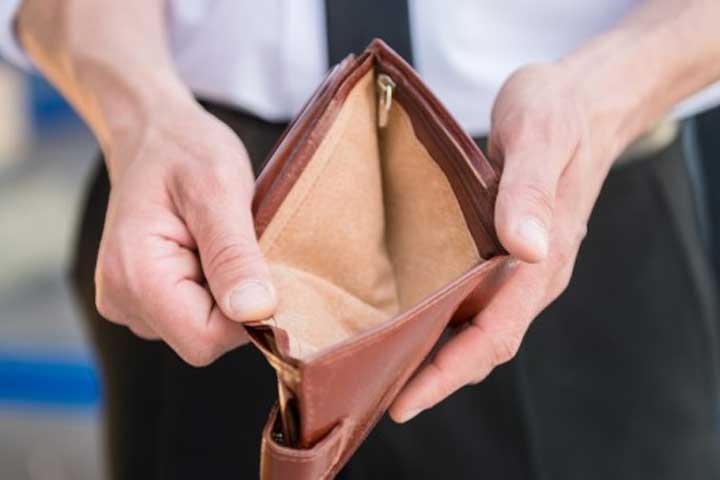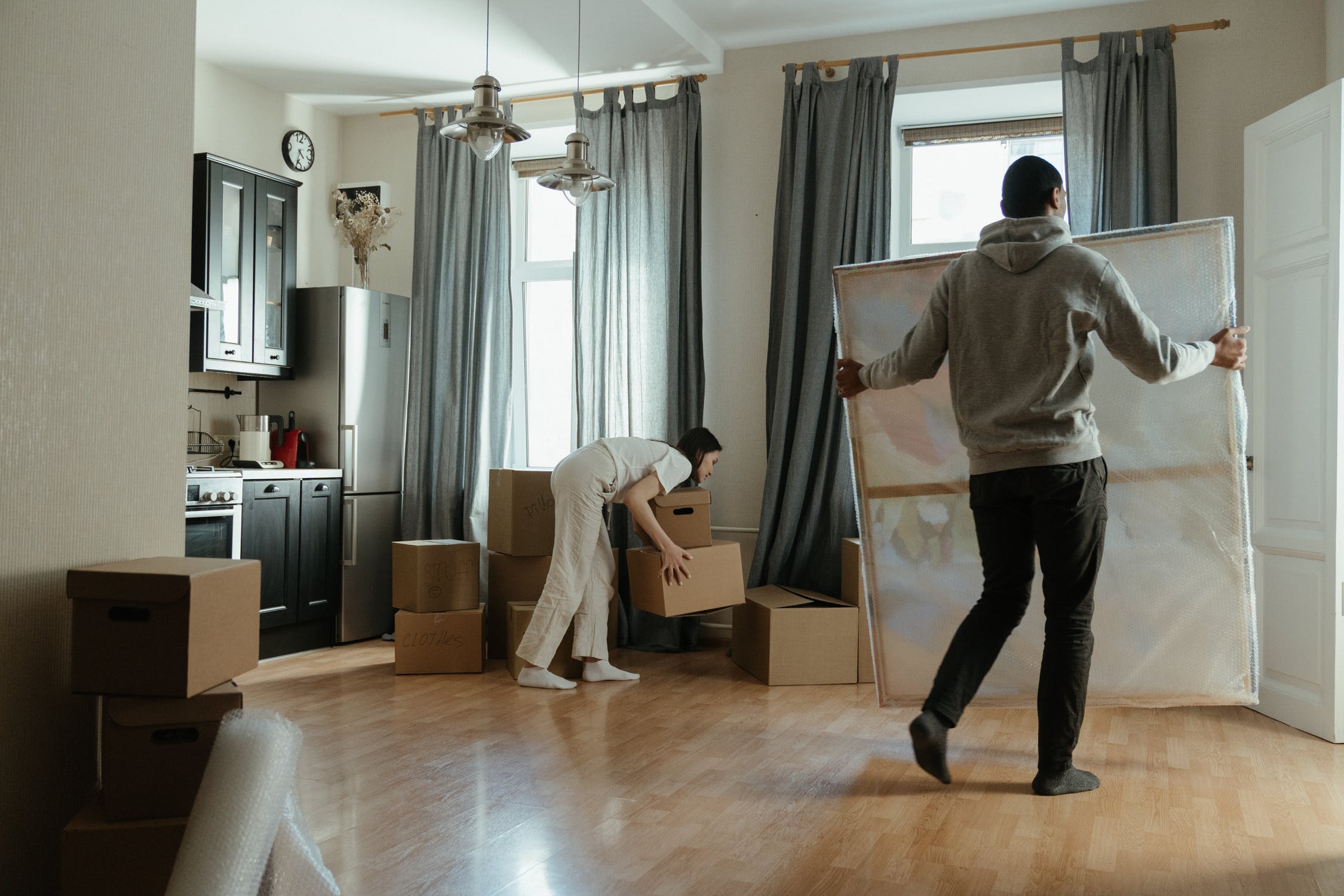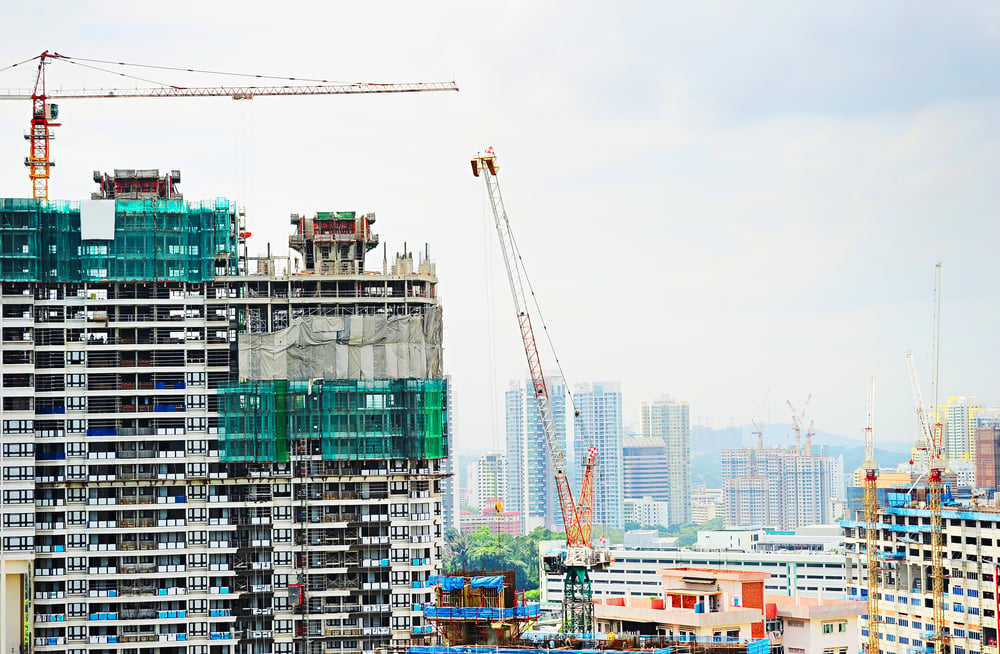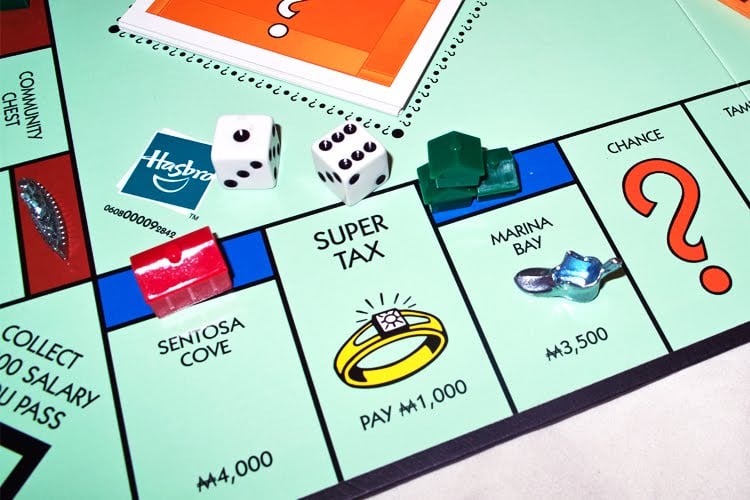Congratulations! If you’re reading this article, you’re probably moving up and out from your starter home and upgrading to a condo, or thinking about doing so.
Contents
Reasons for upgrading
Minimum Occupancy Period
To buy or sell first?
Buy first, sell later: Pros and cons
Sell first, buy later: Pros and cons
New launch EC or resale condo?
New launch
Resale EC
Reasons for upgrading to a condo
 Better location. Upgrading might move you or your spouse closer to your workplaces, reducing the travelling distance and time.
Better location. Upgrading might move you or your spouse closer to your workplaces, reducing the travelling distance and time.
 Primary school. Suppose you’re eyeing a specific primary school. Moving lets you choose properties within a 1km radius of your choice school for your child.
Primary school. Suppose you’re eyeing a specific primary school. Moving lets you choose properties within a 1km radius of your choice school for your child.
 Free from HDB’s rules. Some set HDB rules include having to wait out your Minimum Occupancy Period. You’re also free to keep as many pets as you want, unlike HDB’s ‘one-approved-dog’ per household rule.
Free from HDB’s rules. Some set HDB rules include having to wait out your Minimum Occupancy Period. You’re also free to keep as many pets as you want, unlike HDB’s ‘one-approved-dog’ per household rule.
Also, the Ethnic Integration Policy (EIP) isn’t imposed on resale condos. Should you choose to sell your condo in future, your pool of buyers won’t be limited to buyers of a specific race.
 Condo amenities. Maybe you’re a gym buff who likes swimming laps or hitting the weights multiple times a day. With both the pool and the gym just a stone’s throw from your doorstep, you can do just that.
Condo amenities. Maybe you’re a gym buff who likes swimming laps or hitting the weights multiple times a day. With both the pool and the gym just a stone’s throw from your doorstep, you can do just that.
Condos are stepping up their amenity game, with some featuring swanky facilities such as karaoke rooms, a bowling alley and even an ice therapy room.
 Asset progression. If you’re upgrading to an executive condo (EC) with a freshly completed Minimum Occupancy Period (MOP) of five years, you can find yourself in an immediately advantageous position.
Asset progression. If you’re upgrading to an executive condo (EC) with a freshly completed Minimum Occupancy Period (MOP) of five years, you can find yourself in an immediately advantageous position.
This is because the EC is already halfway to privatisation. In another five years, you’ll be able to sell it to foreigners or companies. Being able to do so opens up a whole pool of prospective buyers, and with condo demand and prices rising over the years, you’re almost always guaranteed a profit.
Whatever your reason, here’s how you can upgrade from your HDB flat to a condo.
You need to MOP before upgrading
The soonest you can upgrade is after completing your MOP, which is usually five years. Your MOP depends on the type of flat purchased.
During your MOP, you cannot do these four things :
• Sell your flat
• Buy another HDB flat
• Buy another private property
• Buy property abroad
To check your eligibility, you can go to My HDBPage and log in with your Singpass.
(back to top)
To buy or sell first?
Buy first, sell later
 Pros
Pros
1. No need for temporary accommodation
Selling a HDB flat on the open market can take months and depends on a variance of factors.
• The current property market
• If your property requires renovation
• Proximity to educational institutes and amenities
• How far it is to the nearest MRT/LRT station
• If it’s on a high floor or low floor
You don’t need to worry about having a roof over your head if you’ve secured your second condo prior to selling your HDB flat.
Doing so saves you thousands of dollars on potential rental costs. Plus, if you decide to renovate your condo before moving in, you can continue living at your HDB while completing your renovations.
2. Deferred Payment Scheme (DPS)
A big concern HDB upgraders have when taking the “buy first, sell later” approach is having to service the mortgage of two housing loans simultaneously until the condo receives TOP status.
In reality, this isn’t a concern as many EC developers offer the Deferred Payment Scheme (DPS). Under this scheme, you only pay the initial 20% downpayment of the property purchase price, with 5% in cash and 15% in either cash or CPF.
The rest of the 80% is paid after two to three years. During these years, you’re free from having to make loan repayments, stamp duties and all other financial obligations (relating to the condo, of course).
Having a lower upfront cash outlay plus an extended deferment period will allow you to do these things:
• Move into your condo
• Sell your current HDB within six months to avoid ABSD
• Pay off remaining home loans
• Get a fresh LTV rate
Only condos that have received TOP status or the Certificate of Statutory Completion can be sold under DPS, so be sure to check with the developers before pulling the trigger.
However, there’s a catch: the property’s price will also be higher by about 10%, which is a fair trade-off for deferring your loan repayment.
 Cons
Cons
1. A lower LTV ratio
Banks can only issue a loan based on the adjusted purchase price instead of the stated price. All discounts, rebates and benefits will be removed.
According to the Monetary Authority of Singapore (MAS), DPS is considered a benefit, along with payment of valuation fees, legal fees or stamp fees. This is because the borrower can use the deferred amount for other purposes during the deferral period, such as investing in the stock market.
Calculating the adjusted purchase price. Your developer might offer attractive perks when you purchase directly from the showflat, such as covering the legal fees of S$40,000 for a S$1.5 million condo. The adjusted purchase price will be S$1.46 million.
With a lower purchase price, your Loan-to-Value (LTV) ratio drops accordingly. Your minimum cash downpayment also jumps 5% to 25%. MAS has certain LTV limits for properties where the OTP is granted on or after 6 July 2018.
This means you need to be prepared to expand a bigger cash downpayment when paying for your condo.
Like BSD, LTV is also determined by property price or valuation, with the difference that it takes the lower amount.
This means that having a higher valuation will result in you being able to borrow more for your house, but at the same time, it will also result in you paying higher stamp duties. Bear this in mind before actively looking for a higher valuation.
2. TSDR restrictions – You might not get your desired loan amount
Currently, the Total Debt Servicing Ratio Threshold (TDSR) threshold stands at 55%. It applies to loans where the OTP of the property purchase was granted on or after 16 December 2021.
If your monthly income is S$10,000, your outstanding debt repayments cannot be more than S$5,500 per month.


TDSR considers your monthly loan repayment, plus all your outstanding financial obligations. These debts include car loans, student loans, credit card debts etc.
This limits the total amount you can borrow, which in turn may affect the property you can afford.
3. Your MSR is limited
You might also be limited by the Mortgage Servicing Ratio (MSR), where you are allowed to only use up to 30% of your monthly income to service your home loans.
If your monthly income is S$10,000, your maximum monthly home loan is capped at S$3,000.
As if the TDSR cap wasn’t enough, the MSR might add another layer of difficulty when securing the loan amount required and impact your overall affordability when purchasing a second property*.
*MSR doesn’t apply to privatised ECs
If you’re unable to meet the MSR, you have a couple of options. You can make a bigger downpayment, increase the loan tenure, buy a cheaper property or… simply make more money.
Use 99.co’s affordability calculator to check the maximum loan you qualify for and the maximum property price you can afford based on the current loan limits and MSR.
4. You need to pay ABSD
If you’re buying your condo before selling off your current HDB flat, you need to pay Additional Buyers Stamp Duty (ABSD) of 17% when you purchase your second property (if you’re a Singaporean).
However, you can apply for ABSD remission and get your money back via the e-Stamping portal on IRAS’s website. The requirements are:
• You need to be a married couple, and at least one spouse has to be a Singapore Citizen (SC)
• You must remain married at the time of application
• You must sell your first home within six months of buying your condo, or when your condo has received its TOP
• You must not have bought more properties before applying for the remission
ABSD is determined by the seller’s quoted price or property valuation, whichever is higher. If the purchase price quoted by the seller is S$2.3 million and the market value of the property is S$2.2 million, the ABSD will be calculated based on S$2.3 million.
Here are the current rates for ABSD.
| Types of buyers | Rates on or after 16 December 2021 | |
| Singapore Citizens | First residential property | 0% |
| Second residential property | 17% | |
| Third and subsequent residential property | 25% | |
| Permanent Residents | First residential property | 5% |
| Second residential property | 25% | |
| Third and subsequent residential property | 30% | |
| Foreigners | Any residential property | 30% |
Example: Buying a property valued at S$2.3 million
ABSD payable: 17% x $2.3 million = S$391,000
ABSD must be paid within 14 days of completing the sale, and the remission application must be made within six months after the sale of your HDB.
To avoid ABSD altogether, you need to be legally contracted to sell your current HDB flat before signing the Option to Purchase for your new condo.
5. Under pressure to sell quickly
To receive ABSD remission, you need to sell your property within six months. This may throw a spanner in the works, especially if the property market is stagnant or, worse, on the downtrend.

ABSD is non-deferrable and must be paid in full and on time. Failure to do so means incurring a penalty of four times the amount of unpaid duty under the Stamp Duties Act.
6. You have CPF restrictions
Your condo is considered your second property if you purchase it before selling off your HDB flat. This puts certain restrictions on using your CPF Ordinary Account (OA) to finance your condo.
If you’ve used your CPF for your first home and want to use the excess of your CPF OA for your second property, you’re required to set aside a Basic Retirement Sum (BRS).
Those below the age of 55 must set aside the BRS in their OA and Special Account (SA), while those above the age of 55 must set aside the BRS in their OA, SA and Retirement Account (RA).
There are two terms to familiarise yourself with; Valuation Limit and Withdrawal Limit.
Valuation Limit (VL): The market value of your property at the point of purchase or the purchase price of the property, whichever is lower.
If the market value of your property is S$2 million and the purchase price is S$1.8 million, the VL will be S$1.8 million. When the total CPF withdrawn by all owners reaches the VL, each owner must set aside the prevailing BRS if they want to withdraw more CPF to service the outstanding housing loan.
Withdrawal Limit (WL): 100% of VL (for the second property)
After tapping out your CPF WL, you’re no longer allowed to use your CPF to service your housing loan. The remaining loan will need to be financed with cash.
You can use CPF’s Housing Usage Calculator to determine how much OA is available for your property purchase.
(back to top)
Sell first, buy later
Pros
1. No ABSD
As stated above, you can avoid paying ABSD if you sign the option to purchase your second property after selling your HDB flat.
This means having one less process of applying for ABSD remission in your upgrading journey.
2. No LTV cap
To prevent over-leveraging, your LTV ratio drops with the more properties you own. If you’re already servicing one housing loan, the bank can only give you a 45% LTV ratio on your second, for loan tenures up to 30 years. If the loan tenure goes past 25 years or your 65th birthday, your LTV drops even further to 30%. On top of that, the minimum cash downpayment will be higher at 25%.
All this hassle can be avoided if you sell your HDB first before upgrading.
3. More money for your next purchase
Upgrading is a hefty financial commitment that comes with a significant downpayment, especially if you’re taking a bank loan. Selling your HDB first frees up money to fund that downpayment so you can avoid tapping on your cash reserves or CPF.
Here’s why you shouldn’t use your CPF to pay for your house.
Cons
1. Finding alternative accommodation
Suppose you fail to secure your desired condo after selling your HDB. In that case, you’ll find yourself caught in the headache-inducing position of having to source interim accommodation for you and your family.
You can always request an extension of up to three months from the buyers of your HDB flat. However, keep in mind that the buyers may not be agreeable to this as it might push back their moving or renovation plans.
A generous friend or relative might offer their place for you to put up at while you search for your second home, but this means you’ll need to incur storage charges for your belongings and furniture.

Think about it. You need to pay moving costs of your possessions to either your rental or storage unit, after which you need to pay to move it again to your condo. There’s always the risk of things getting damaged in the process of moving, not to mention the costs will start to stack up.
2. Buyer’s Stamp Duty (BSD)
Regardless of which route you decide to take, you’ll need to pay Buyer’s Stamp Duty (BSD) to the Inland Revenue Authority of Singapore (IRAS).
BSD is determined by your property’s purchase price or valuation, whichever is higher. If the purchase price stated in the Sale & Purchase Agreement is S$2 million and the property’s market value is S$1.8 million, the BSD will be calculated based on S$2 million.
Here are the current BSD rates for properties bought on or after 20th February 2018.
| Purchase price / Market value | Rates for residential properties |
| First S$180,000 | 1% |
| Next S$180,000 | 2% |
| Next $640,000 | 3% |
| Any amount beyond | 4% |
| *BSD is rounded down to the nearest dollar | |
Example: Calculating BSD for a S$2m condo
| Percentage payable | Calculation | Total |
| 1% off the first S$180,000 | 1% x S$180,000 | S$1,800 |
| 2% off the next S$180,000 | 2% x S$180,000 | S$3,600 |
| 3% off the next S$640,000 | 3% x $640,000 | S$19,200 |
| Remaining amount of S$2m | S$1m x 4% | S$40,000 |
| Total BSD payable | S$(1,800 + 3600 + 19,200 + 40,000) | S$64,600 |
The BSD must be paid within 14 weeks of signing the S&P agreement.
(back to top)
New launch EC or resale condo?
When it comes to choosing between upgrading to a brand new EC versus a resale condo, there are many pros and cons for each of them. Ultimately, it boils down to your preferences and financial standing.
New launch executive condos (EC) are considered subsidised public housing for the first ten years. The standard HDB rules still apply, such as selling your current HDB flat within six months of receiving the keys to your new condo.
New launch EC
What are Executive Condos? ECs are a public-private housing hybrid built and sold by private developers. They come with all the bells and whistles of a private condo, but are sold as public housing via HDB. They have the standard MOP period of 5 years and are privatised 5 years after the MOP.
This adds up to a total period of 10 years, after which they can be sold on the open market.
Income ceiling. Your average gross monthly household income must not exceed S$16,000 when buying an EC. If it does, that’s a good problem to have, but it also means you’re priced out of ECs and need to look to the resale market.
More affordable. New launch ECs are more affordable than resale condos at the outset, making it a more attractive option for price appreciation.
New amenities. Buying a new launch means enjoying spanking new facilities, such as the gym and the pool. It doesn’t just end there – the fittings and fixtures in your unit are also untouched and in pristine condition, with a one-year warranty in the event any issues pop up.
You get to bask in that new condo environment for many years before wear and tear sets in.
Developer perks. Another upside of upgrading to a new launch condo directly at the condo showflat is getting access to perks, such as early-bird discounts and other incentives. Some incentives include developers absorbing the stamp duty payable.
A wider choice of units is also available, such as picking from different stacks or floors versus being whatever properties owners are listing on the open market.
Progressive Payments Scheme (PPS). Only available to Buildings Under Construction (BUCs)*, the Progressive Payments Scheme (PPS) are great for buyers who don’t have a ton of upfront capital to spare.
Under the PPS, buyers can space out their payment obligations over a longer period of multiple instalments as the condo isn’t constructed yet. Payments are only made when construction milestones are achieved, which means more makes it more manageable financially.
*Until the condo receives its Temporary Occupation Permit (TOP), it’s referred to as a Building Under Construction (BUC).

Use 99.co’s Progressive Payment calculator to check your payment breakdown.
Resale levy payable. Unless you’re buying a private condo, you’re subjected to a resale levy when you sell your subsidised HDB flat to buy an EC from a developer. According to HDB, the resale levy is put in place to maintain “a fair allocation of public housing subsidies between first-timers and second-timers by reducing the subsidy enjoyed for the second HDB flat or EC”.
Here’s the resale levy amounts payable.
| First subsidised housing type | Resale levy amount | |
| Households | Single grant recipients | |
| 2-room | S$15,000 | S$7,500 |
| 3-room | S$30,000 | S$15,000 |
| 4-room | S$40,000 | S$20,000 |
| 5-room | S$45,000 | S$22,500 |
| Executive flat | S$50,000 | S$25,000 |
Long waiting time. Construction of a condo can take anywhere from three to four years, during which they’re known as a BUC. This construction period is on top of the 15-month long wait for the condo’s land acquisition launch, or the completion of foundation works to, whichever is earlier.

With this in mind, it’s recommended to buy first and sell later for new ECs to ensure you’ll have a place to live while you wait for your condo to be completed.
Resale condo
What are resale condos? Resale condos are condos built by private developers, including ECs that have been privatised after ten years.
No income ceiling. Private condos have no ceiling on income, so if your monthly household income is more than S$16,000, you can buy resale ECs without any problem.
More options. Location is important when choosing a place to live, and resale condos give you a wider range of projects to choose from. Of course, the nearer to the Core Central Region (CCR), the higher the prices will be. Here’s the average price psf for condos in the Core Central Region, Rest of Central Region (RCR) and Outside of Central Region (OCR).
| Average price (S$) psf | ||||||||
| Location | 2015 | 2016 | 2017 | 2018 | 2019 | 2020 | 2021 | 2022 |
| CCR | S$1,871 | S$2,008 | S$1,964 | S$2,176 | S$2,330 | S$2,203 | S$2,341 | S$2,408 |
| RCR | S$1,388 | S$1,396 | S$1,469 | S$1,593 | S$1,716 | S$1,676 | S$1,800 | S$1,849 |
| OCR | S$1,105 | S$1,131 | S$1,156 | S$1,188 | S$1,274 | S$1,296 | S$1,318 | S$1,360 |
Resales also give you the lease option of 99-year, 999-year or even freehold, unlike ECs, which have a 99-year lease.
Possible wear and tear. While new launch ECs are brand new and come with a one-year defect liability period, resale condo units are older and thus exposed to wear and tear. This means having issues such as water leakage, faulty air-con units, cracked tiles etc, that you need to factor into your renovation budget.
The amenities and condo facade may also not be well maintained and look dated.
ABSD payable. Unlike an EC, there are upfront ABSD charges when upgrading to resale, setting you back at least six figures. You can apply for ABSD remission later, but this means the added stress of selling your HDB within six months.
If you’re picking a condo as a potential investment piece, this article talks about the pros and cons of each property while we cover the price gaps and trends between resale and EC condos here.
You can keep your HDB. As ECs are subsidised housing, you have to dispose of your previous flat within six months of getting your keys to the EC. Whereas with resale units, you can have your cake and eat it too. This means being able to lease out your HDB for rental income while living in your resale home.
You can purchase under one name. When buying a resale, you can choose to buy under one name (either husband or wife) if the one individual is financially capable. This allows the other spouse to buy another private property without incurring ABSD, thus allowing you to own two homes.
And if you decided to keep your HDB, you’d have three houses in total. Can you say monopoly?

Choosing between a new launch EC and resale pares down to you and your family’s personal housing needs and financial standing, and hopefully, this article helps clear up any doubts you may have about the nitty-gritty details of upgrading.
Which would you upgrade to – EC or resale? Let us know in the comments section below or on our Facebook post.
If you found this article helpful, check out New launch vs. Resale condo payment schedules: What’s the difference? and 5 fatal mistakes Singaporeans make when upgrading to a condo.
Looking for a property? Find the home of your dreams today on Singapore’s fastest-growing property portal 99.co! If you would like to estimate the potential value of your property, check out 99.co’s Property Value Tool for free. Also, don’t forget to join our Facebook community page or Telegram chat group! Meanwhile, if you have an interesting property-related story to share with us, drop us a message here — and we’ll review it and get back to you.
The post Upgrading from a HDB flat to a condo? The guide to end all guides. appeared first on 99.co.

